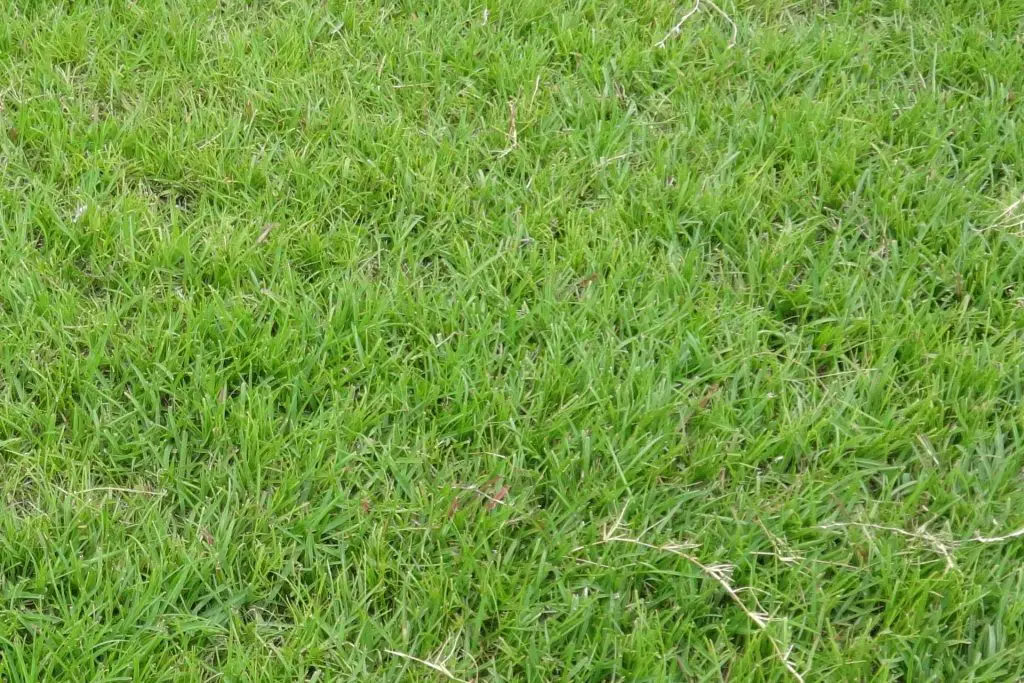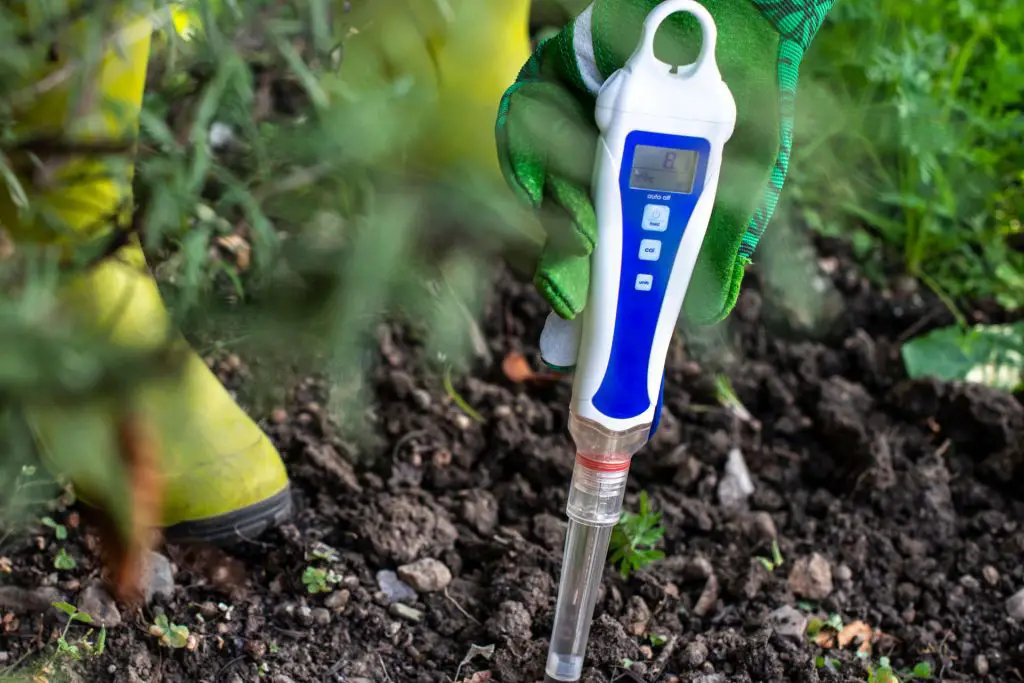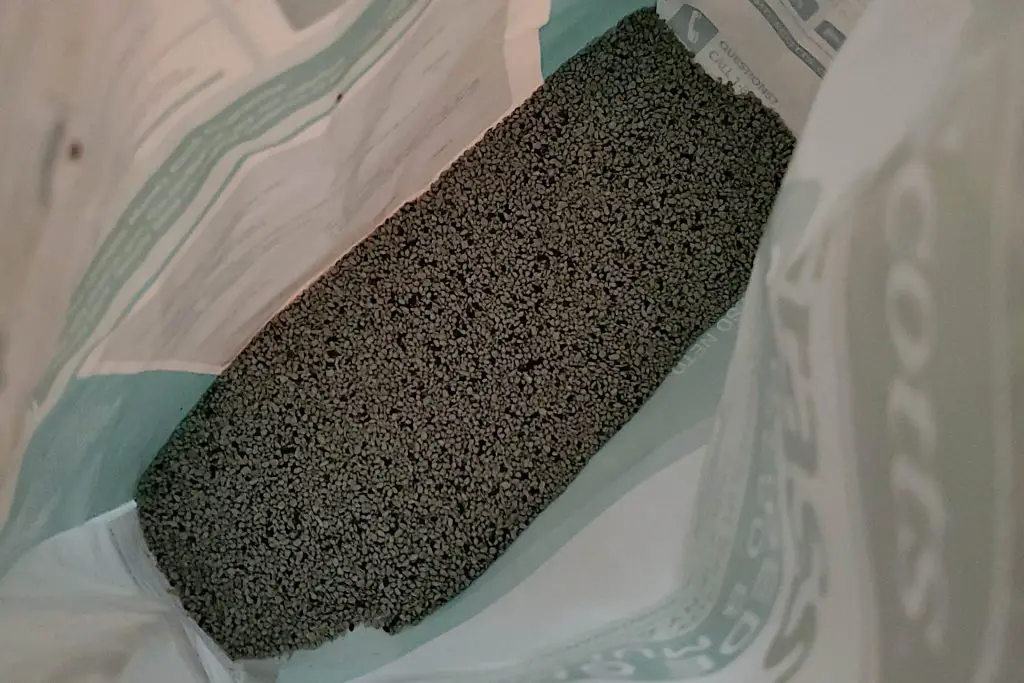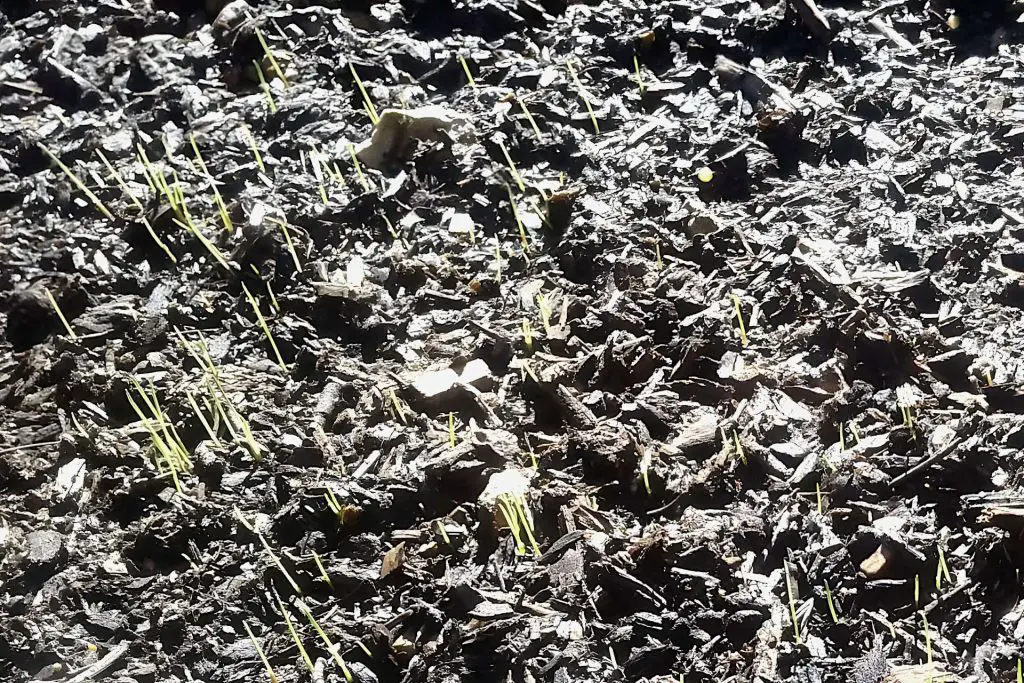Is Fall A Good Time to Plant Centipede Grass?
- Planting centipede grass in fall is possible, but success hinges on climate and timing.
- The young stolons of centipede grass are highly susceptible to cold weather, making proper timing crucial.
- For optimal growth and survival, the grass must be well-established before temperatures plummet.
“Is Fall A Good Time to Plant Centipede Grass?” Is question is often asked by homeowners eager to establish a lush, green lawn. Below, we’ll dissect the various elements of lawn care, soil preparation, and climate suitability to give you a clear answer.
To help we will explore the pros and cons of planting centipede grass in the fall, supported by real-life case studies. This will include looking in detail at soil preparation, fertilization, and watering schedules to ensure your lawn thrives, regardless of when you choose to plant.
What is Centipede Grass?

If you live in the South, you may have noticed the prevalence of centipede grass in your landscape. Chances are it’s in your yard too even if you didn’t plant it. Centipede is stoloniferous, or a creeping grass that is perfect for the climate of southern and coastal areas of the southeastern United States.
The grass gets its name from its long, narrow grass blades/leaves that resemble those of a centipede. There will always be people who argue that centipede grass is the best option. But is this really the optimal time to plant it? Let’s examine the advantages and possible disadvantages of planting centipede grass in the fall
Centipede grass (Eremochloa ophiuroides) is low-maintenance, making it popular with homeowners. It is a warm-season grass variety that flourishes in hot, humid regions and is comparatively drought- and salt-tolerant. However, centipede grass does not tolerate shade well, so it is typically only used in areas that receive full sun and is a relatively slow-growing lawn grass.
In appearance, it tends to have a light green hue and, in structure, centipede grass makes a thick, mat-like lawn. It is often used on golf course fairways and residential lawns. The difference between Centipede and St Augustine, another common warm-season variety that is often chosen as an alternative, is that its root structure is shallower.
Why Plant Centipede Grass in the Fall?
Centipede grass is usually best planted in the late spring or early summer. There are though, some areas of the country, where it is possible to plant centipede grass in the fall.
Advantages to Planting in Fall.
Fall planting has several advantages, including cooler weather and less competition from weeds and there are typically fewer pests active at this time.
Planting in the fall also provides an extended maturation period. Generally, freshly planted centipede grass requires one whole growing season to become thick and fully developed.
Planting in fall gives the grass the opportunity to be well-established enough to sustain heavy lawn usage. It also helps that the roots will be significantly stronger when the heat of the summer hits
Climate Suitability for Centipede Grass
Understanding the climate suitability for centipede grass is crucial for its successful growth and long-term maintenance. This warm-season grass thrives in specific climate zones, making it essential to assess your local conditions before planting.
Ideal Climate Conditions
Centipede grass excels in warm, humid climates. It’s particularly well-suited for USDA Hardiness Zones 7 through 10. The grass shows excellent drought resistance, but it also appreciates moderate rainfall. High sun exposure is another factor that contributes to its robust growth.
However, when planting in the fall you have to consider the water requirements of centipede grass. During germination, it has an insatiable demand for water and continues to need to be well-watered during its establishment period.
Temperature and Frost Tolerance
Centipede grass prefers temperatures ranging from 75°F to 90°F for optimal growth. While it can tolerate mild frosts, it’s not the best candidate for regions with harsh winters. Its frost tolerance is moderate, and prolonged cold can lead to grass damage or even death.
Seasonal Considerations
Planting in late spring to early summer is generally recommended. However, if your region experiences mild winters, fall planting can also be successful. Keep an eye on seasonal planting trends and weather forecasts to make an informed decision.
Table: Climate Suitability for Centipede Grass
| Factor | Ideal Condition | Tolerance Level |
|---|---|---|
| Temperature | 75°F – 90°F | Moderate |
| Rainfall | Moderate | High |
| Sun Exposure | Full Sun | Moderate |
| Frost Tolerance | Mild Frost | Low |
Quick Tips:
- Check your USDA Hardiness Zone before planting.
- Monitor local weather forecasts for temperature and rainfall patterns.
- Consider lawn aesthetics; centipede grass offers a fine texture and light green color that may or may not suit your landscaping vision.
Depending on your location, the timing of planting can vary because of climate. Having a reliable source of water is clearly important but rainfall patterns can vary considerably. For example, rainfall tends to drop off after October in Florida1 but increases in Texas over the fall period. 2 Knowing the ins and outs of local climate variability allows you to create a lawn maintenance plan that aligns with the grass’s natural growth patterns, ensuring a lush and healthy lawn year-round.
How does Centipede Grass Grow?
In deciding whether planting centipede grass in fall is right for your lawn it is important to understand how it grows and establishes itself.
Centipede grass is stoloniferous, which is commonly referred to as creeping grass. As a type of grass, it varies from other varieties in that the blades are shorter and they grow by creeping, which can lead the stolons to appear to look like a centipede, hence the name. They move across the lawn and root down in places along the way.
As a warm-season turfgrass, its main growing season is when soil temperatures range between 60°- 90°F, although unusually for grass varieties, centipede grass doesn’t go completely dormant.3 Below this temperature range, it will stop growing, whilst if temperatures become too elevated, its growth will slow down. This is why temperatures in late spring or fall are optimum for grass growth and the best times to seed.
Centipede grass, as a grass type, also seeds easily. This means that it is easier than with some types of grasses to fill in bare patches. If you collect up stolons from around the edge of the lawn you can place these on any bare areas. Cover lightly with compost and they will root down and fill in the patches.
The Best Time to Plant Centipede Grass: Spring vs. Fall

Determining the best time to plant centipede grass is a pivotal decision in turf management with much depending on your local climate. While its peak growing season is spring, you might wonder if fall planting is also a viable option.
As we have discussed, centipede grass will continue to grow if soil temperatures are above 60°F. However, in practical terms, you should be looking to plant where temperatures are likely to remain above 70°F for the next eight to twelve weeks, to allow initial growth to establish itself.
Depending on where you are situated, your fall planting opportunity is likely to be a window between the end of August and October. If you leave it any later then the grass may fail to properly establish itself. If temperatures drop without the grass being properly established, the young grass stolons could be destroyed if temperatures drop below freezing.
Spring Planting: The Peak Season
Spring is generally considered the best time to plant centipede grass. The soil temperature is rising, and the risk of frost is minimal. This season aligns well with the grass’s natural germination rate and nutrient requirements.
Pros:
- Higher germination success
- Soil is warm but not too hot, aiding root establishment
- Longer growing season ahead, allowing for robust growth
Cons:
- May require more frequent watering
- Higher risk of weed competition
Fall Planting: An Alternative Option
Planting in fall is less common but can be successful in regions with mild winters. The soil is still warm from the summer, providing a good environment for root development.
Pros:
- Less weed competition
- Soil retains summer warmth, aiding in root system development
- Less frequent watering needed
Cons:
- Risk of frost damage if winter arrives early
- Shorter growing season may result in less robust growth
Table: Spring vs. Fall Planting
| Factor | Spring Planting | Fall Planting |
|---|---|---|
| Germination Rate | High | Moderate |
| Weed Competition | High | Low |
| Watering Needs | Frequent | Less Frequent |
| Frost Risk | Low | Moderate to High |
Quick Tips:
- Always check the weather forecasts before planting.
- Consider soil test results to adjust fertilization and watering schedules accordingly.
Choosing the right time to plant centipede grass involves weighing the pros and cons of spring versus fall planting. By considering factors like climate zones, soil pH, and seasonal planting trends, you can optimize your lawn care strategy for a lush, thriving lawn.
In general, the best time to plant centipede grass is likely to be in the late spring, when the weather is warm and the main growing season begins. However, as we have seen, centipede grass can also be planted in the fall, as long as the soil temperature is likely to stay above 60°F for long enough for the stolons to be established.
How to Plant Centipede Grass in Fall
If you are determined to plant in the fall, bear in mind that depending on the weather, it may take longer for the grass to establish itself than if you were planting it in late spring. However, as, well as the time of year, there are several other considerations that need to be taken into account when planting.
Centipede grass needs full sun to partial shade to grow well, so choose an area of your yard that gets at around six hours of sun per day. It is though, not particularly shade tolerant. If you have areas of your lawn that are likely to be constantly in shade then these should be seeded with a shade-tolerant warm-season grass variety, such as St. Augustinegrass or zoysiagrass.
Soil Testing and Preparation for Centipede Grass
When it comes to establishing a lush, green lawn, the foundation lies in soil testing and preparation. Let’s delve into how you can set the stage for a thriving centipede grass lawn.
Conduct a Comprehensive Soil Test
Start by conducting a comprehensive soil test. This will give you valuable insights into the nutrient requirements, moisture levels, and soil pH. You have two options: either send a soil sample to a certified lab or use a home soil testing kit. This step is crucial for understanding what your soil lacks and needs.
Adjust Soil pH and Nutrients

Centipede grass thrives in acidic soils with a pH range of 5.0 to 6.5. If your soil leans towards alkalinity, it’s time to take action. Incorporate sulfur amendments like calcium sulfate or elemental sulfur to lower the pH. This ensures that your seeds won’t struggle during the germination process.
Ideal Soil Conditions for Centipede Grass
| Soil pH | Nitrogen Level | Phosphorus Level | Potassium Level |
|---|---|---|---|
| 5.0 – 6.5 | Low to Medium | Low to Medium | Medium to High |
Till and Weed the Soil
Once you’ve adjusted the soil’s pH, move on to tilling the surface. Use a garden tiller or rototiller to break up the soil to a depth of four inches. This helps in loosening compacted soil and allows for better water infiltration. During this phase, make sure to remove any weeds or debris that could hinder growth.
Fertilization and Nutrient Boost
After tilling, apply a fertilizer tailored for centipede grass. This ensures that the nutrient requirements are met, setting the stage for robust germination.
Plan Your Watering Strategy
Post-seeding watering is often overlooked but is vital for seed establishment. Since walking on freshly seeded areas is a no-go, plan your watering strategy in advance. For large lawns, consider installing a sprinkler system.
Final Preparations
Before sowing the seeds, apply any additional sulfur amendments to fine-tune the soil pH. Rake and grade the soil until it’s smooth and level, ready to put down your centipede grass seeds.
Quick Checklist:
- Conduct a soil test
- Adjust soil pH
- Till and weed the soil
- Apply fertilizer
- Plan watering strategy
The process prior to seeding is crucial, you’re not just preparing the soil; you’re setting the stage for creating the best possible lawn and ensuring the post lawn care needs are more straightforward ultimately helping you achieve a lawn that’s the envy of the neighborhood.
Planting the Seed

Before being planted you should check the centipede grass seed’s viability, especially if it is more than a year old. If the viability is low it will obviously adversely affect the result. When happy, it is then time to plant the seed.
It is crucial that you spread it evenly over the prepared soil ensuring the seed has good soil contact. A rotary spreader or drop-type spreader is the best way to broadcast. A distribution rate of around eight ounces per 1,000 square feet is normally adequate, but seed viability may affect this.
Once the seeds have been broadcast, you can cover the seed with a straw mulch or a light layer of compost. This will help the soil retain moisture.
Watering After Planting

Getting the watering regime right after is important. Too little water and the seed won’t grow properly and too much water and you can drown your seed.
The germination stage is the most important as it is at this point there is the greatest demand for water. You may need to water several times a day. Be careful not to step onto the seeded area, and use a sprinkler so that you do not wash away the seed. Monitor the soil’s moist watering to keep it between 21-40%. In practice, this could be between half an inch and an inch of water each day, depending on climate and soil.
After the grass seed has germinated and the first grass shoots are visible throughout the majority of the seeded area, you should typically begin to reduce the frequency of watering. You should water just once each day, but you must take care not to saturate the ground.
Typically, approximately two weeks after sowing the seed, you may decrease the frequency of watering to every other or third day during this third week. Again, a great deal will rely on the prevailing climatic conditions at the time.
Case Studies: Planting Centipede Grass in Fall
Successful Fall Planting
Homeowner: Emily, Charleston, SC
Emily lives in Charleston, South Carolina, a region known for its warm, humid climate. She decided to plant centipede grass in early fall, right after the scorching summer temperatures had subsided.
Strategy:
- Conducted a soil test in late summer to determine nutrient requirements and soil pH.
- Chose early September for planting to take advantage of the warm soil and reduced weed competition.
- Implemented a watering schedule using a sprinkler system to ensure consistent moisture.
Outcome:
- The grass stolons established well, thanks to the warm soil and moderate climate.
- Emily faced minimal weed competition, allowing the centipede grass to thrive.
- By the time winter arrived, the grass was well-established and survived the mild frosts typical of her region.
Key Takeaway:
Timing and climate played a significant role in Emily’s success. Her proactive approach to soil testing and seasonal planting ensured that the grass was robust enough to withstand winter.
Unsuccessful Fall Planting Due to Cold
Homeowner: Mark, Raleigh, NC
Mark lives in Raleigh, North Carolina, where winters can be unpredictable. He decided to plant centipede grass in early November, underestimating the risk of early frost.
Strategy:
- Skipped the soil test, assuming the existing lawn conditions were adequate.
- Planted in early November, thinking the mild fall would last longer.
- Relied mostly on natural rainfall for watering, and occasional manual watering with a hose.
Outcome:
- The young stolons were not able to establish themselves properly before the unexpected early frost hit.
- Inconsistent watering schedule and lack of fertilization plan further hindered the grass’s ability to withstand cold.
- The centipede grass did not survive the winter, leading to a wasted investment of time and resources.
Key Takeaway:
Mark’s late timing and lack of preparation led to the failure of his centipede grass lawn. A more informed approach, considering climate suitability and turf management, could have led to a different outcome.
These case studies highlight the need to understand your local climate with proper timing and have a robust post-planting lawn care regimen crucial factors in successfully planting centipede grass in the fall.
Final Thoughts: Is Fall A Good Time to Plant Centipede Grass?
In general, the best time to plant centipede grass is in the spring, when the weather is warm and the main growing season begins. However, as we have seen, centipede grass can also be planted in the fall, as long as the soil temperature is likely to stay above 60°F for long enough for the stolons to be established.
If you do decide to plant it in the fall, it is important to do so early enough in the season that the grass will have a chance to establish before cold weather sets in. In general, if you are going to plant Cenetiped grass in the fall then September or early October is the best time. If you leave it much later than the end of October you could run into problems because Centipede compared to St Augustine grass is a relatively slow-growing variety and an early cold snap could destroy the germinating seeds
Commonly Asked Questions
Here are some of the most frequently asked questions about centipede grass, including whether or not it can be planted in the fall.
Can you plant centipede grass in the fall?
Yes, if you live in a warm-season zone it is possible to plant centipede grass in the fall. When will depend on your exact climate but as a rule of thumb, the most conducive time to plant is in September or October. Later than this you run the risk of temperature drops in winter damaging the stolons.
When should you fertilize centipede grass?
Generally, the best times of year to fertilize centipede grass are in early spring, summer, and late fall. You should conduct soil tests to make sure that you do not over-fertilize and with mature grass it is best to use a slow-release fertilizer.
How often should I water my centipede grass?
When mature, you should water your centipede grass about once or twice a week, or as needed to keep the soil moisture above 21%. It is often best to water deeply rather than more frequently.
Related Articles
Choosing the Right Grass in Texas for the Perfect Lone Star Lawn
Notes:
- Florida State University, Florida Climate Center,: Precipitation in Florida
- Texas A&M University, Weather
- Texas A&M University, Richard L. Duble: Centipedegrass
